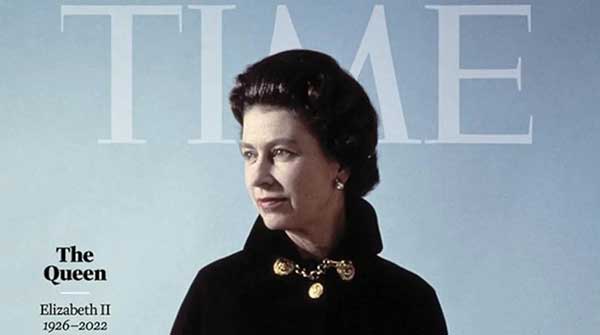Time had a uniquely American vibe – tonally authoritative, irreverent, unawed by authority, and fond of winners
 Time magazine – 100 years old on Mar. 3 – was the creation of Henry Luce and Briton Hadden, two young men who’d gone to Yale together. But as Hadden died in 1929, it was Luce who guided it to its once highly influential perch as a reporter of events and shaper of public opinion.
Time magazine – 100 years old on Mar. 3 – was the creation of Henry Luce and Briton Hadden, two young men who’d gone to Yale together. But as Hadden died in 1929, it was Luce who guided it to its once highly influential perch as a reporter of events and shaper of public opinion.
Luce and Hadden saw an unfilled need and set out to fill it. They would produce an accessible weekly news magazine that told you all you needed to know in tightly written, punchy, digestible prose. The first issue was 32 pages long, six of which were advertising. And to enhance digestibility, the content would be organized into departments.
Of course, the “all you needed to know” bit required a grain of salt. Time was clever – some might say sneaky – about expressing its preferences. Descriptive modifiers did a lot of the heavy lifting, subtly conveying favourable or unfavourable images about the subjects under consideration.
 |
| Related Stories |
| Nixon in love
|
| Jimmy Carter was an accidental president
|
| Did John F. Kennedy really win the U.S. presidency?
|
A quote from a history of the magazine neatly captures the technique: “If Time liked them, they marched or strode; if not, they shuffled, straggled, shambled, plodded, lumbered, barged, swaggered, wobbled or slouched.”
At its mid-20th century peak, Time had a uniquely American vibe – tonally authoritative, irreverent, unawed by authority, and fond of winners. If you were too busy to spend endless hours plodding through difficult material, the magazine’s blend of crisp breeziness and seeming omniscience could leave you feeling fully informed about the world. Which, of course, was the intent.
Indeed, that’s why my father – in Dublin, Ireland – picked up a weekly copy. We weren’t a household short of newspapers. We bought three dailies – one morning and two evening – and two on Sundays. Time, however, provided an accessible wide-ranging read that the likes of the Irish Press or the Evening Herald couldn’t match.
In due course, I took to borrowing my father’s copy, even when – thinking there might be a topic too racy for my innocent eyes – he stashed it away on top of the wardrobe in the parental bedroom. And 1960 was a year of particular devotion. John F. Kennedy was running for president, and Time was a weekly window into his progress, first through the Democratic primaries and then onwards to the general election.
Being aware – because my father had told me – that Luce was a faithful Republican, I was struck by how benignly Time portrayed Kennedy. My father chuckled, noting that he (Kennedy) obviously had friends at the magazine.
Actually, the benign disposition went right to the top. Although Luce formally endorsed the Republican Richard Nixon, he was friendly with Kennedy’s father and they’d come to an understanding. Running as a Democrat, Kennedy would be obliged to take some positions Luce disagreed with. But as long as Kennedy didn’t cross certain lines, Time wouldn’t go after him.
In fact, Time had been promoting Kennedy as a potential presidential candidate since 1957. That year’s Dec. 2 issue put him on the cover, one of the most coveted spots in American media for anyone building a profile. The accompanying story contained language like this: “He reached the publicity stratosphere with one rocket burst of television and stays there, floating effortlessly like a satellite, worrying the Hell out of other earthly and Democratic hopefuls.”
Time’s marketing savvy wasn’t restricted to the design of the magazine and the readability of its prose. A Man of the Year concept was introduced in 1927, with the aviator Charles Lindbergh as the first to be so designated. The idea proved newsworthy and popular, if at times controversial.
The criterion was whomever “for better or worse, has most influenced events in the preceding year,” but lots of people perceived the designation as an honour. So when the likes of Adolf Hitler (1938) and Joseph Stalin (1939 and 1942) were named, various noses were out of joint.
While Time was generally adept at recognizing currents in American life, sometimes it had a blind spot. It wasn’t averse to features on popular culture; for instance, 1950s cover stories included movie stars Marilyn Monroe and Kim Novak. But the magazine didn’t similarly recognize the most transformative American popular culture figure of the era – Elvis Presley.
Starting with a brief April 1956 reference, Time tended to be dismissive, often treating him as a joke. Even his premature death in 1977 wasn’t sufficiently notable to warrant a cover story.
Time is still around today, albeit in a materially diminished form. Whether Luce would be pleased with it is an entirely different matter.
Troy Media columnist Pat Murphy casts a history buff’s eye at the goings-on in our world. Never cynical – well, perhaps a little bit.
For interview requests, click here.
The opinions expressed by our columnists and contributors are theirs alone and do not inherently or expressly reflect the views of our publication.
© Troy Media
Troy Media is an editorial content provider to media outlets and its own hosted community news outlets across Canada.

